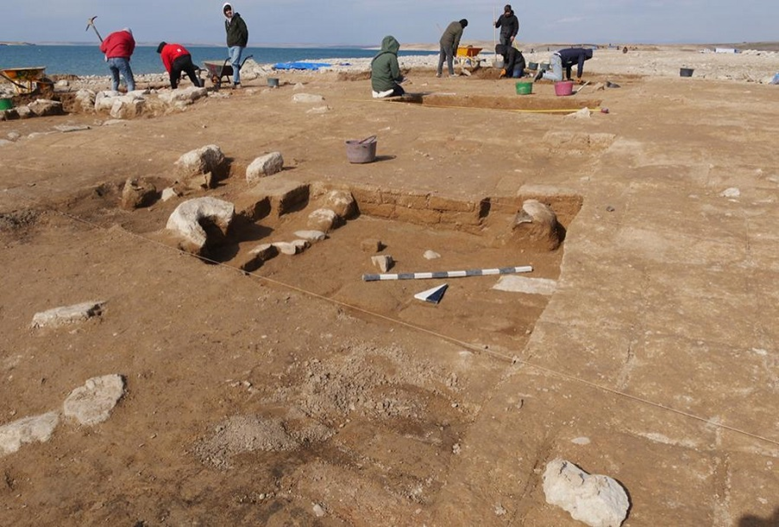After the Tigris River dried up, an ancient city from the Bronze Age was discovered

Without effort and excavation, the Tigris River revealed the secret it kept for many years, revealing to us the existence of an ancient city that its waters kept and hid its secrets. The decrease in the water level of the Tigris due to the dry season led to the discovery of an ancient city dating back to the era of the Mitanni Empire around 1550 and 1350 BC, which controlled large parts of northern Mesopotamia and Syria.
The city, which is located on the Tigris River in the site of Kamuna in the Dohuk Governorate of the Kurdistan region of Iraq, appeared near the waters of the Mosul reservoir in early 2022, due to the low water level and the drought in Iraq, so that it became clear that the vast city includes a palace and many large buildings, and it was not excluded Experts believe that it is the ancient city of Zakhiko, as it is believed to have been an important center in the Mitanni Empire, which dates back to the Bronze Age.

?How did the city appear
The Director of Antiquities and Heritage in Dohuk, Bekah S. Brefkani, explains to The Independent Arabia how this city appeared, saying: “With the south of the country suffering from severe drought and in order to irrigate agricultural crops, in December 2022 large quantities of water from the Mosul reservoir were withdrawn. It is the most important water reserve in Iraq. This step contributed to the emergence of an ancient city dating back to the Bronze Age that was submerged under the waters of the Tigris without any prior archaeological investigations."
A city added to the archaeological sites map
With the emergence of this city, which was added to the map of archaeological sites in Iraq, researchers began to map it, and excavations began for the details it preserves, as many large buildings with huge fortifications, walls and towers were revealed, as well as a huge multi-storey storage building and an industrial complex.

?How did the city resist the water
The Director of Antiquities and Heritage in Dohuk explains that the city has preserved its walls and details despite its decades of existence under water, and this is due to the occurrence of an ancient earthquake around 1350 BC, which resulted in the fall of the upper parts of the buildings, especially the two-storey buildings, which led to the preservation of the antiquities underneath.
?What was found inside the city
According to Bekah S. Prevkani, the area of the city is very wide, but since a large part of it is submerged under the waters of the river, its exact area is not known. He explained, "The excavations are continuing during the working seasons and when the water is low, and it is hoped that future excavations will show us more important results."
Brefkani indicated that the assets were transferred from the antiquities found in the city, to the Department of Antiquities in Dohuk, which are ceramic vessels that contain an archive that included more than 100 cuneiform tablets dating back to the Middle Assyrian period, even some clay tablets that may have been Letters, still in their clay envelopes.

"The city is currently not ready for tourists, so the entire site was covered to preserve it, and sand and stones were placed to protect it from water during its rise, and excavations are continuing," he added.
Iraq is a museum without walls
Archaeological researcher Junaid Amer explains that Iraq includes civilizations that need concerted local efforts with foreign missions to excavate them and monitor existing antiquities for their maintenance.
Amer says that Iraq provided digital data with atlas maps for 15,000 archaeological sites throughout Iraq, and this data was part of the work of the late archaeologist and former Minister of Culture Abdul Amir Al-Hamdani. It includes the efforts of a century and a half of excavation work in Iraq, where 12 percent of these sites, which constitute the historical identity of all the stages that passed through Mesopotamia, were excavated.
In the same context, archaeologist Elaf Al-Janabi explains that the areas that most need excavations are the central and southern regions, as they were among the most important residential areas and witnessed a wide population distribution during the different eras in Mesopotamia, starting from the fourth millennium (about 3000 BC). Down to Islamic times.
Source : Websites

